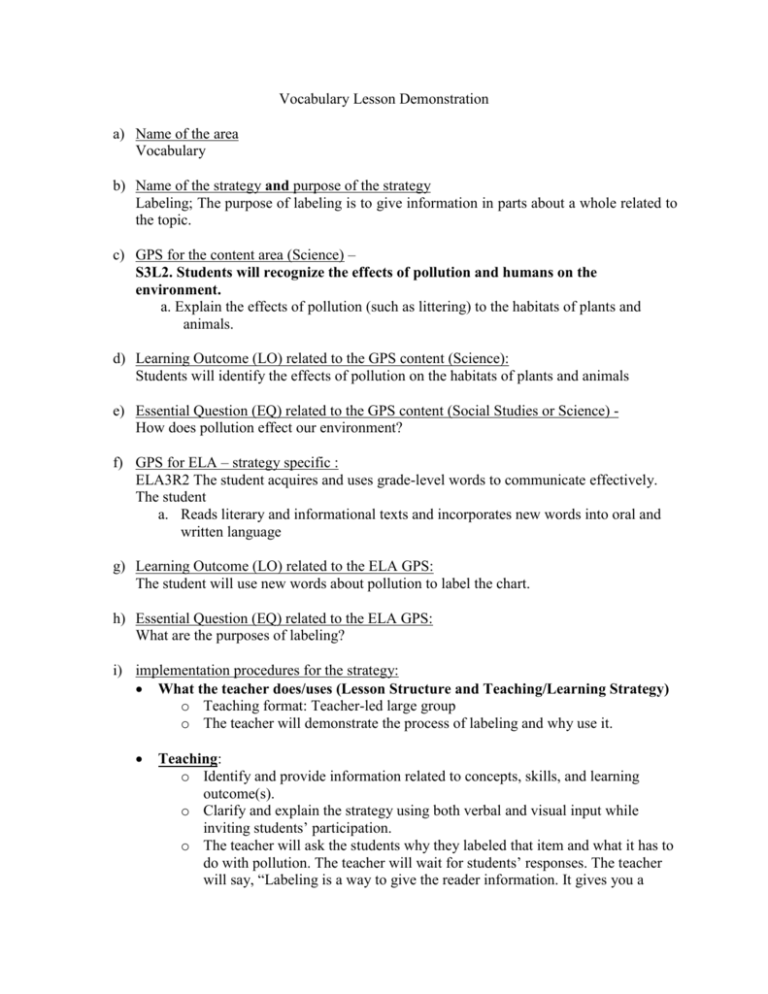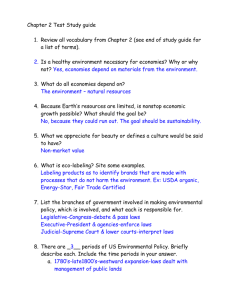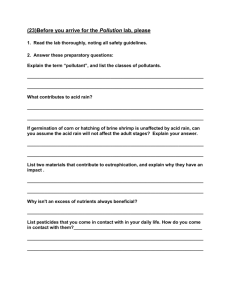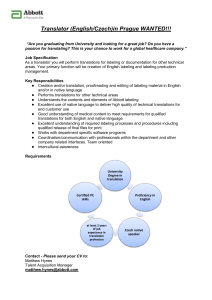labeling_Collins_Pearce_Pitts_Sexton
advertisement

Vocabulary Lesson Demonstration a) Name of the area Vocabulary b) Name of the strategy and purpose of the strategy Labeling; The purpose of labeling is to give information in parts about a whole related to the topic. c) GPS for the content area (Science) – S3L2. Students will recognize the effects of pollution and humans on the environment. a. Explain the effects of pollution (such as littering) to the habitats of plants and animals. d) Learning Outcome (LO) related to the GPS content (Science): Students will identify the effects of pollution on the habitats of plants and animals e) Essential Question (EQ) related to the GPS content (Social Studies or Science) How does pollution effect our environment? f) GPS for ELA – strategy specific : ELA3R2 The student acquires and uses grade-level words to communicate effectively. The student a. Reads literary and informational texts and incorporates new words into oral and written language g) Learning Outcome (LO) related to the ELA GPS: The student will use new words about pollution to label the chart. h) Essential Question (EQ) related to the ELA GPS: What are the purposes of labeling? i) implementation procedures for the strategy: What the teacher does/uses (Lesson Structure and Teaching/Learning Strategy) o Teaching format: Teacher-led large group o The teacher will demonstrate the process of labeling and why use it. Teaching: o Identify and provide information related to concepts, skills, and learning outcome(s). o Clarify and explain the strategy using both verbal and visual input while inviting students’ participation. o The teacher will ask the students why they labeled that item and what it has to do with pollution. The teacher will wait for students’ responses. The teacher will say, “Labeling is a way to give the reader information. It gives you a better understanding of the picture you are looking at. For example, when looking at certain maps; cities, states, rivers, lakes, oceans, and many other things are labeled to help guide you through the picture. “ o The teacher will ask the students where they have seen labels. Students will respond with examples they have seen. The teacher will give examples of labels including food items, school items, street signs, etc. The teacher will explain that these labels give us information about that item. o The teacher will then say, “Now that we have gone over the process of labeling, we are going to label the acid rain cycle.” Modeling: o The teacher will model labeling by first showing a picture of an acid rain cycle without labels. Then, show the students the cycle with the labels. Talk about how much more sense the picture makes when you see what things mean. Guided Practice: Students will be presented with a picture of the water cycle. The picture will have to include a factory dumping waste materials into a stream. The stream’s water will be evaporating into the clouds. The clouds will be raining on an ecosystem (forest). The ecosystem will be damaged. The picture will have blank lines were the effects that are happening in the picture can be labeled. I will model the first part and allow the students to give answers in order to label the remaining blank lines. Independent Practice: The students will be able to take a picture of the city and forest scene. There will be cars and factories emitting toxins into the air. There will be a section of the picture where trees are being destroyed. Animals will be breathing a cloud of toxic air. The students will have to label the chain of events that are occurring in the picture. j) blank copy of any implemented strategy reproducible with the correct APA format of the source: Acid rain model – Color Pollution Model - Drawn k) Reference page with the correct APA format of the citations for all resources: Case Study. Acid Rain: Formation and its effects: From the publisher: Author’s comments (2012) Retrieved from: http://cgz.e2bn.net/e2bn/leas/c99/schools/cgz/accounts/staff/rchambers/GeoB ytes/GCSE/Case%20Studies/Acid_Rain_small. Pearson Custom Education: Developing literacy: LITR 3130. New York: Pearson Learning Solutions, p. 511. Pitts, D. (2012). Unlabeled Diagram of Pollution. Pollution Diagram, Valdosta State University, Valdosta, GA. l) Research article: First English Teacher. (2012). Get Your Kids Reading English By Labeling Your Home. Retrieved from: http://www.firstenglishteacher.com/get-your-kids-reading-english-bylabeling-your-home/ a. (1) The subjects of the research are children or students learning how to label items in the classroom or at home. (2) The purpose of the research is to teach parents how they can help their children understand the process of labeling. Teaching children how to label at home is very beneficial for children and helps them get involved and better understand labeling in a fun way. (3) The results of this research were how to help give parents a better understanding of how to teach their children how to label. This article provided ideas in the house for children to label and what exactly parents need for this specific process or activity. This article also explained why labeling is important for children to learn and how they can have fun with it. Dumping waste Evaporation of waste Acid rain fall




